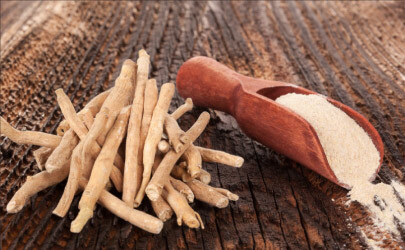How Different Age Groups Are Powering the Growth of the U.S. Ashwagandha Supplements Market

The U.S. Ashwagandha Supplements Market exhibits a variety of consumer adoption patterns across different demographic and lifestyle segments, highlighting distinct motivations, health goals, and purchasing behaviors. Adults aged 18 to 49 represent the largest portion of the market, accounting for over half of the total demand. This demographic serves as the foundation for the market's growth, driven by rising workplace stress, digital fatigue, and a focus on mental well-being. Ashwagandha's adaptogenic properties have established it as a preferred solution for managing everyday anxiety, enhancing concentration, and supporting energy balance. Many individuals in this age group are health-conscious consumers actively seeking natural alternatives to maintain productivity, emotional stability, and physical endurance without relying on synthetic or pharmaceutical products. The growing popularity of wellness apps, functional foods, and holistic lifestyles further aligns with this demographic's inclination toward botanical supplements, making them key influencers in both online and offline sales.
The senior segment, consisting of individuals aged 50 and above, accounts for approximately 25% of the U.S. Ashwagandha Supplements Market. Their consumption is influenced by preventive health practices and a desire to sustain vitality and cognitive function. This age group increasingly relies on herbal formulations for immune support, joint health, and improved sleep quality. With heightened concerns about chronic fatigue and age-related hormonal changes, ashwagandha is gaining traction as a safe, non-stimulant option that promotes overall longevity and resilience. Seniors are more likely to trust established brands with clinical validations and certifications, such as GMP or organic labeling. Distribution through pharmacies and specialty stores remains strong for this demographic, as they prefer brands with transparent labeling and consistent dosages. Additionally, cross-promotional blends combining ashwagandha with ingredients like turmeric, magnesium, or melatonin have proven particularly appealing to this segment.
Teenagers aged 13 to 17 form a smaller yet rapidly emerging consumer group, representing nearly 8% of the market. Their engagement is largely influenced by parental awareness and social media trends that highlight natural mood and stress management options. Facing increased academic and social pressures, teenagers show interest in products that promote focus, reduce anxiety, and enhance sleep quality. Their use of ashwagandha products is often mediated through family purchases or parental supervision, with gummies, flavored powders, and low-dose formulations being especially popular due to their convenience and taste. Educational initiatives and pediatric endorsements are gradually normalizing the use of herbal supplements among adolescents, though safety awareness and dosage regulation continue to impact uptake within this category.
Athletes and fitness enthusiasts represent around 14% of the total market, a segment that has experienced consistent growth as the intersection of sports nutrition and natural performance enhancers broadens. For these consumers, ashwagandha serves not only as a stress-relief aid but also as a functional ingredient that enhances endurance, optimizes recovery, and supports testosterone balance. Scientific studies linking ashwagandha supplementation to improved strength and reduced muscle fatigue have bolstered its credibility within the fitness community. Pre- and post-workout blends featuring ashwagandha extracts have become popular among gym-goers seeking holistic alternatives to synthetic boosters. In response to this demand, e-commerce platforms and specialized health stores have begun offering customized formulations that combine ashwagandha with BCAAs, L-theanine, or collagen peptides. This trend underscores the broadening appeal of ashwagandha beyond traditional wellness users to include goal-oriented consumers incorporating it into their daily training routines.
While each consumer group engages with ashwagandha for various reasons, their collective behavior reflects a broader cultural shift toward preventive wellness and natural self-care. Younger adults prioritize mental performance and productivity, older adults focus on longevity and recovery, teenagers seek emotional stability, and athletes aim for physical optimization.
The diversity of these motivations illustrates the versatility of ashwagandha as a supplement capable of serving multiple health objectives across different life stages. Brands within the U.S. are leveraging this diversity by tailoring their marketing strategies: positioning capsules and tinctures toward adults and seniors, gummies toward teenagers and young professionals, and performance powders toward athletes.
As digital marketing, personalized recommendations, and subscription-based models continue to influence the consumer journey, cross-demographic engagement is expected to strengthen even further. The increasing convergence of interests across these demographic segments is likely to drive additional growth within the market.